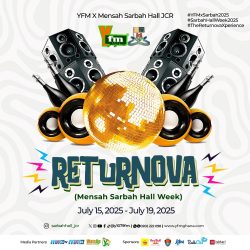By J. N. Halm
As a proud member of Generation X—those of us born between 1965 and 1980—I am convinced that ours is the very best generation. Think about it. There are events that neither the generations that preceded ours nor those that came after ours will ever get to enjoy. I like to think of ours as the In-Between Generation.
We witnessed the end of the Cold War. Many of us were old enough to vividly recall the coming down of the Berlin Wall in November of 1989. In terms of communication, we were privileged enough to have witnessed the rise of personal computers and the Internet. We attended extra classes to learn Microsoft Office. We had to learn Word, Excel, PowerPoint, Outlook, and Access. We were there when the Internet became the Internet. The generations following ours, Generations Y, Z, and the Alphas will never know the joy of going to Internet cafes to browse and send emails.
However, ours was also the generation that posted letters. Snail mail was the only mail we knew. We would go to the Post Office, buy stamps and envelopes, sit down, write letters, place them in envelopes, and go post them. Those coming after us will never know how exciting it was to write to a pen pal and to receive a response from the one. The anticipation, waiting for a response from someone thousands of miles away, was simply to die for.
The generations that preceded ours, especially those coming just before ours, the Baby Boomers—those born between 1946 and 1964—grew up during major upheavals in the world. They grew up in a time of conflict—the civil rights movement, the Cold War, and the rise of consumer culture. Many of them have never really gotten the hang of this fast-paced Internet era we find ourselves in.
Maybe, just maybe, this is just me being nostalgic. But you cannot blame me too much. Nostalgia comes with those of my generation and the generations before ours. At least, that was one of the findings of a study about how older generations behave as online consumers. The study was titled “Nostalgia and Negotiation: The electronic word‐of‐mouth and social well‐being of older consumers.” The results were published in the October 2023 edition of the Psychology & Marketing journal.
Nostalgia is one of four types of electronic word‐of‐mouth that was generated by older consumers. The other three types of eWOM are seeking reassurance/advice, providing reassurance/advice, and negotiation. It is important to understand that older-generation consumers also turn to the Internet for consumption and social connection. Electronic word‐of‐mouth (eWOM) is defined as “consumer‐generated, consumption-related communication that employs digital tools, including any positive or negative statement made by potential, actual, or former customers about a product or company”.
Traditionally, word-of-mouth (WOM) has been a way by which businesses seek to get the positives of their brands broadcasted by consumers. Positive WOM is a very cost-effective way of getting prospects to hear about products from third parties with no vested interest in the products or services on offer. As with everywhere customers congregate, there is always a tendency for discussions about the brands that brought them together.
Customer review sites are the ultimate places for eWOM. Simply put, these are websites on which reviews can be posted about people, businesses, products, or services. In other words, these are sites prepared specially for people to share word-of-mouth evaluations about products and services. Review sites happen to be very important because they build trust for brands. The truth is that customers prefer to purchase from brands they trust. This also means that brands that receive numerous positive reviews are also going to get a lot of patronage and therefore more sales.
The introduction of social media platforms has made online discussions about products and services even easier. It has become far easier for customers to post evaluations of products and services based on customer experience shared on social media platforms. Just by clicking on a star classification rating scale, a customer can give their views on what they think of a particular brand. Sometimes, the evaluation will be by simply clicking on a thumbs-up or thumbs-down sign.
Interestingly, the way customers use review sites is not the same way they tend to use social media reviews. Customers use review sites for factual information gathering. When customers are serious about making a purchase, they prefer to visit these review sites. Potential customers know that they will get very useful facts about the intended purchase from these sites. They know that because the businesses behind the products being discussed do not control the review platform and they do not have any influence on those making the remarks, the comments are closer to the truth. For instance, sites like Yelp, Tripadvisor, and TrustPilot can make or break a business. Many people are not aware but the most popular review site also happens to be the world’s top search engine—Google.
On the other hand, social media for reviews is used by customers for online conversations revolving around personal stories and sharing emotions. In other words, customers will share a lot more when it comes to social media. For instance, Facebook, X, and even LinkedIn provide customers with the opportunity to give an account of how the product or service has impacted their lives. People are chattier on those platforms, leading to a lot more engagement with others.
The truth is that the advent of electronic means of communication has made it common for customers to use these platforms for much more than just communicating about products and services. Several studies have found that there are social, non-commercial benefits of eWOM. Online conversations among customers go beyond just discussing products and services. For instance, there have been instances when eWOM has been used to get individuals to join blood donation exercises. Others have used it to get people to act a lot more responsibly as consumers, such as by engaging in sustainable clothing purchasing.
For older-generation consumers, digital platforms are unfamiliar territories. Generation X happens to be the last generation that appreciates and can find its way around the World Wide Web. Very few of those of the preceding generations even have email addresses. Unlike those of Generation Z and Alpha Generation, who are even described as “digital natives”, older generations have to traverse the WWW more cautiously.
As stated earlier, the aforementioned study found that older generations attain social benefits from using digital platforms. As an example, social bonding is enough motivation for creating eWOM content. Older generations who eventually get on digital platforms will tend to use those platforms to strengthen ties with other customers. It has been proven that these older generation customers end up trusting their social contacts even more than the businesses behind the brands that brought the customers together. These customers also conform to and accept information from other more knowledgeable consumers.
There are indeed individuals who started as customers of a common brand who just went on social media review sites to discuss their brand experiences. Bonds were established over the common experience and, over the years, these friendships have blossomed—even beyond electronic platforms to real-life experiences.
It has also been found that when individuals go online to engage with others around a brand experience, they tend to feel good about themselves. Just as negative eWOM creates anxiety, so does positive eWOM create a feel-good feeling. In this sense, engaging with people who are saying good things about the brand leaves the individual feeling good. In addition, individuals who engage in positive eWOM also tend to have an improved self‐evaluation of their situation and functioning within society. This is what is referred to as social well-being. These results in a personal benefit—improved well-being—that a customer will receive by engaging in positive eWOM.
Businesses can take advantage of this phenomenon to build stronger engagements with their customers, especially those of the older generations. The starting point is always to have a team monitoring online portals. By setting up strong online engagement teams, businesses can build communities of customers, who will become very dedicated to the brand.
An added advantage of building strong online communities around brand experiences is that such a community can become a formidable marketing force for the brand. Loyal customers have been known to exhibit certain traits that are very beneficial to the organisation. For instance, a loyal band of customers will go out of their way to spread positive messages about the brand, defending it at every opportunity.
Businesses know that customers of the older generations are still those with money to spend. Therefore, any discussions that involve how these generations act as customers are always of importance to businesses. From the ongoing discussion, it is abundantly clear that this group of customers is using online portals for more than just accessing information about products and services. They are using online review platforms to achieve personal commercial and non-commercial benefits. It is those businesses who know this who can take advantage and create customers who will continue to love the brand for generations.










